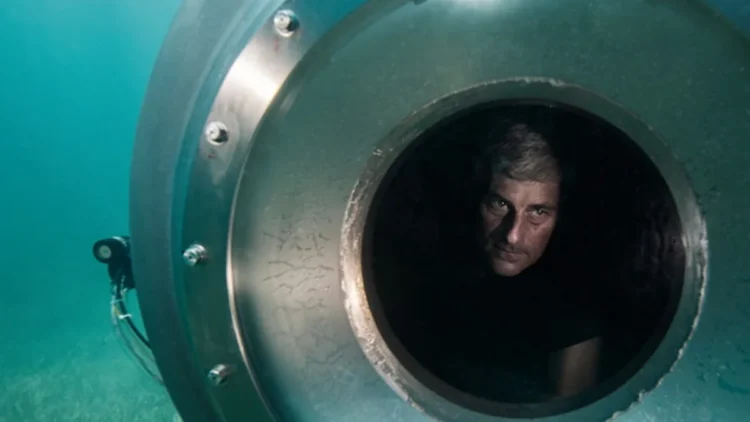Netflix’s Titan: The OceanGate Disaster falls short in exploring the complex issues that led to the tragic submersible implosion, which resulted in the loss of five lives in the summer of 2023, as it concentrates primarily on the wrongdoings of Stockton Rush.
On June 18, 2023, the Titan submersible operated by OceanGate suffered a catastrophic implosion, killing all five individuals on board, including the company’s CEO and co-founder, Stockton Rush. This shocking event captured global attention, and unsettling details emerged shortly after, such as the submersible being operated using a PlayStation controller. The tale of Titan resonates with a familiar narrative of our time, in which a self-absorbed individual prioritizes personal glory over safety, ultimately leading to a devastating outcome.
For viewers unfamiliar with the reasons behind the Titan’s failure, Mark Monroe’s Netflix documentary, Titan: The OceanGate Disaster, offers a comprehensive overview of the events leading to the submersible’s implosion. However, Monroe also seems hesitant to delve into why OceanGate was allowed to embark on its final, fatal journey and the factors that supported Rush beyond his wealth and toxic demeanor. The documentary tends to focus exclusively on Rush’s actions, despite the fact that this conclusion is apparent throughout the narrative.
Monroe’s documentary predominantly examines the eight years leading up to the Titan’s implosion, detailing the individuals who were initially brought on to make Rush’s vision a reality, and who eventually departed when it became evident that safety was secondary to cost savings and convenience. Central to the issue was the decision to use carbon fiber for the submersible’s hull instead of conventional materials like titanium. While carbon fiber is cheaper to produce and transport, it was largely untested for deep-sea exploration. Instead of opting for a more reliable material, OceanGate chose to add acoustic sensors to alert them when the carbon fiber fibers fractured, misleadingly presenting it as a safety measure. The company also circumvented regulations concerning crew qualifications by designating nearly all personnel as “mission specialists.” This reflects a company culture that embodied Rush’s ego and a broader societal mentality that views regulations as obstacles to innovation and progress.
When Titan examines the various individuals involved and utilizes the extensive footage from OceanGate’s tests and workshops, it creates a more immediate experience than the well-crafted articles detailing the disaster. While publications like “The New Yorker” and “WIRED” offer valuable insights, there’s something particularly haunting about watching Rush during a test dive as we hear the “pop” of carbon fiber strands breaking. Monroe effectively conveys an unsettling impression of what the final moments of the doomed Titan voyage may have been like, avoiding exploitative methods. It is particularly troubling that Rush could experience such a definitive warning and yet retaliated against the engineer who included the monitoring instruments. In an endeavor demanding utmost diligence, Rush consistently displayed his anger not at failures, but at being confronted with potential failures.
Of course, it’s easy to critique Rush now that he is gone, a victim of his own negligence, indifference, and ignorance. While alive, he possessed the means to silence critics, leading to a more damning indictment that extends beyond an individual. David Lochridge, OceanGate’s head of marine operations, became a whistleblower, but Rush’s resources allowed him to bury Lochridge in legal fees, ultimately forcing him to retract his complaint and effectively halting the Occupational Safety and Health Administration’s (OSHA) investigation into OceanGate. A whistleblower system without protections that can lead to financial exhaustion and the cessation of investigations represents a serious flaw that transcends OceanGate, yet Titan treats it as merely a shocking detail linked to Rush’s vindictive nature.
Upon examining the circumstances surrounding the rise of OceanGate, a more compelling tension arises than what the documentary presents. Rather than placing all the blame on Rush, we can identify how his marketing acumen and an uncurious press granted him the freedom to market a perilous product. Perhaps Monroe was concerned that a focus on systemic factors might appear as an excuse for Rush’s actions, which could be a valid perspective. However, with Rush positioned as the primary target of the documentary’s critique, it becomes evident how broader systems enabled his misconduct. Regulations were seen as minor impediments to be ignored or circumvented, while the media acted as a promotional partner, failing to pose challenging questions and instead becoming captivated by Rush’s narrative and the allure of exploring the Titanic wreck. The quote from a journalist in the aftermath, “we were misled,” left many astonished. Did this reporter not consider that the CEO might be attempting to sell a product, highlighting the necessity for further investigation to substantiate his claims?
Yet the issues of marketing and sales enticing individuals into a deadly trap linger in the background of Titan, offering little comfort beyond the fact that Rush can no longer pose a threat to anyone else. While this is a relief, the documentary offers no insights into what will happen with the next individual who steps into Rush’s role. There is nothing to suggest that a similarly funded and single-minded person would face challenges in repeating his mistakes. Consequently, Titan becomes another empty reassurance, akin to those made by its sole antagonist. Another Rush will inevitably emerge, and as the documentary illustrates, there appears to be nothing in place to prevent a repeat of past transgressions.
Titan: The OceanGate Disaster is set to be released on Netflix on June 11.
Watch the trailer:























